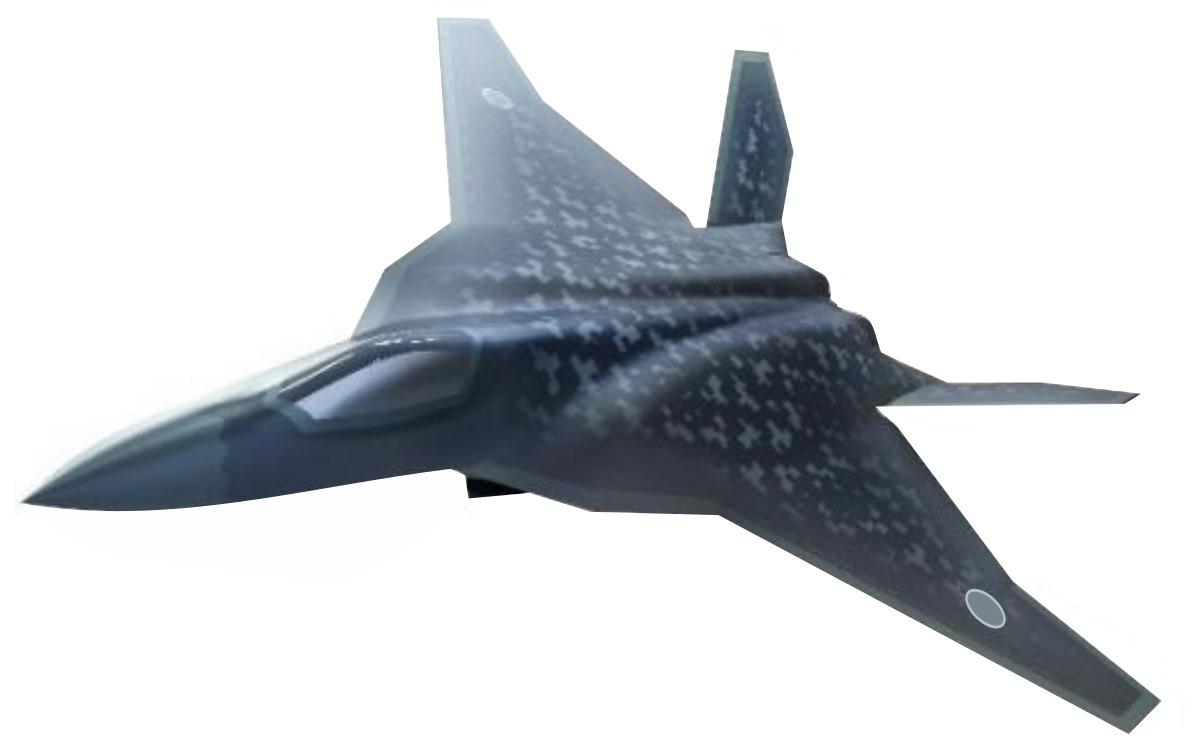Viper Zero! 29 Years Since Its First Flight, Japan’s ‘Highly Modified’ F-16 Fighter Continues To Project Power

Japan’s Mitsubishi F-2 aircraft, based on the US-origin F-16 Fighting Falcon, made its maiden flight on October 7, 1995, 29 years ago.
Built by Japan’s Mitsubishi Heavy Industries under license, the F-2 was referred to as the “Viper Zero.” It is a modified aircraft with more weapon stations, a larger wing area, and more internal fuel capacity.
The F-2 is a multi-role, single-engine aircraft capable of air-to-air and air-to-surface roles. However, it was primarily designed for the latter to safeguard Japan’s sea lanes.
Mitsubishi manufactured 98 airframes of the F-2 aircraft, of which the first 76 were put into service by 2008. The initiative entailed a technology transfer from the US-based Lockheed Martin to Japan, with the production expenses divided, with Japan covering 60% and the United States accounting for the remaining 40%.
Japanese analysts assert that the Mitsubishi F-2 represents the culmination of Japan’s ambitious initiative to develop a combat aircraft specifically designed to address its distinct military needs. For instance, the F-2 was the first fighter in production to be outfitted with an Active Electronically Scanned Array (AESA) radar system.
While classified as a support fighter, the F-2 was designed to serve as a platform for the Japan Air Self-Defense Force (JASDF) to effectively address threats posed by regional adversaries such as North Korea and China. However, unlike the American F-16s, which have flown multiple combat missions worldwide, the aircraft did not see any combat in its nearly 30-year service.
The aircraft is considered better than the original F-16 in several ways.
The official website of Lockheed Martin states: “In 2015, the F-2 became the eighth aircraft platform to be equipped with Lockheed Martin’s Sniper Advanced Targeting Pod…The F-2 has a wing area enlarged approximately 25 percent over the F-16 wing area. The larger wing allows more internal fuel storage and two more weapon store stations than the F-16…In addition to the larger wing area, the F-2 fuselage is approximately 17 inches longer than that of the F-16. The horizontal tails are also larger.”
The JASDF has used the F-2 aircraft to conduct high-value interceptions. Four F-2 fighters were dispatched when a pair of Russian Su-27 entered Japanese airspace near Hokkaido in 2013 while flying over the Sea of Japan. While Russia denied such an incident, the Japanese Ministry of Defense later published photos of the aircraft taken by its F-2 fighter jets. There have been several documented and undocumented incidents when the F-2 has been scrambled to intercept foreign aircraft.
AfriPrime App link: FREE to download...
The aircraft’s manufacturer, Mitsubishi, states: “F2 achieves a better maneuvering capability, with the introduction of an integral structure using a composite material and maximizing the wingspan. Also, with the use of various high-tech materials and structural technology, we have succeeded in making the wings lighter. In avionics, the newest technological domestically oriented equipment has been installed, such as an integrated electronic warfare system and an on-board computer.”

Mitsubishi asserts that the aircraft’s Control Configured Vehicle (CCV) and stealth characteristics were improved using radio wave absorption materials, and the engine was equipped with more thrust to increase capability in take-offs and landings. The aircraft has been a force to reckon with despite barely having the opportunity to prove its might in combat.
Despite being a mainstay of the JASDF, the F-2 has faced its fair share of criticism. Some critics have noted that the aircraft has been too costly for Japan, and the improvements over the baseline F-16 have been minimal.
Other critics have pointed out the aircraft’s exorbitant cost. The F-2, characterized by its compact radar and single-engine configuration, has been less effective than the older F-15 Eagles.
While 29 years have passed since its first flight, and the aircraft has come of age, the JASDF is still deploying it for several crucial missions.
The aircraft, for instance, was deployed to joint Japan-French air drills earlier this year. Last year, Japan carried out its first-ever joint fighter aircraft exercise with the Indian Air Force. The exercise included IAF Sukhoi Su-30s ‘battling’ Japan’s F-2 and F-15 fighters.
The anniversary of the aircraft’s first flight comes when Japan has already started work on the next-generation aircraft that will replace the F-2 as part of a bid to modernize its overall military capability.
F-2 Will Be Replaced — But Not In The Next 10 Years
The F-2 was manufactured in two variants: the F-2A, a single-seat fighter version, and the F-2B, a double-seat trainer version. Japan wanted to develop a third, upgraded aircraft variant—the F-2A Super Kai—featuring conformal fuel tanks and sniper targeting pods. However, the idea was shelved when Tokyo decided to purchase the fifth-generation F-35 Lightning II aircraft from Lockheed Martin.
Several analysts have noted that Japan decided to develop the F-2 due to pressure from the United States. Originally intended to be a “pure” Japanese fighter, the F-2 was to integrate the most recent technological advancements. However, it became a copy of the F-16 as Japan could not produce a fighter jet domestically.

The process of developing the F-2 took place during the peak of trade tensions between the United States and Japan in the late 1980s and early 1990s. According to a US-based think tank, CSIS, the US was concerned that Japan’s push for a domestically made aircraft might result in a turkey. Japan, in turn, was dissatisfied with what it regarded as a US power maneuver to deny Japanese access to vital defense technologies.
The compromise that resulted was the F-2, an arrangement that worked for both parties in the 1990 international security context. Some reports suggest that the country had difficulties upgrading the aircraft due to Lockheed Martin’s reluctance to transfer the technology needed for the requisite upgrades.
Since at least 2019-2020, the proponents of Japan’s military modernization have observed that the aging F-2 aircraft are inadequate to contend with the growing strength of the Chinese air force. Japan developed a next-generation aircraft concept, the F-X, to replace the aging and obsolete F-2, which was later merged with the British Tempest program.

Japan is currently developing a next-generation aircraft under the Global Combat Air Program (GCAP) in partnership with the UK and Italy. The initial market in Japan for the new plane would be to replace the existing 91 MHI F 2 multirole aircraft of the Japan Air Self-Defense Force (JASDF) by 2035.
The program proposes to merge the previously separate sixth-generation projects: the BAE Systems Tempest (UK and Italy) and the Mitsubishi F-X programs. The collaborative governmental headquarters and industrial hub for the effort would be based in the UK, with Japan providing the first CEO and Italy the first leader of the business entity.
The formal development phase will begin in 2025. The prototype flight demonstrator is expected in 2027, and aircraft service induction in 2035.
The F-2 successor is under development, but the aircraft will remain operational with the Japan Air Self-Defense Force for the coming decade.
AfriPrime App link: FREE to download...
- Questions and Answers
- Opinion
- Story/Motivational/Inspiring
- Technology
- Art
- Causes
- Crafts
- Dance
- Drinks
- Film/Movie
- Fitness
- Food
- Juegos
- Gardening
- Health
- Home
- Literature
- Music
- Networking
- Other
- Party
- Religion
- Shopping
- Sports
- Theater
- Wellness
- News
- Culture
- War machines and policy

